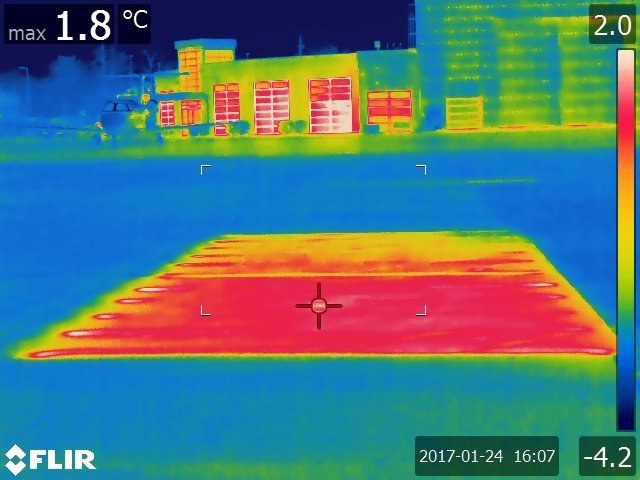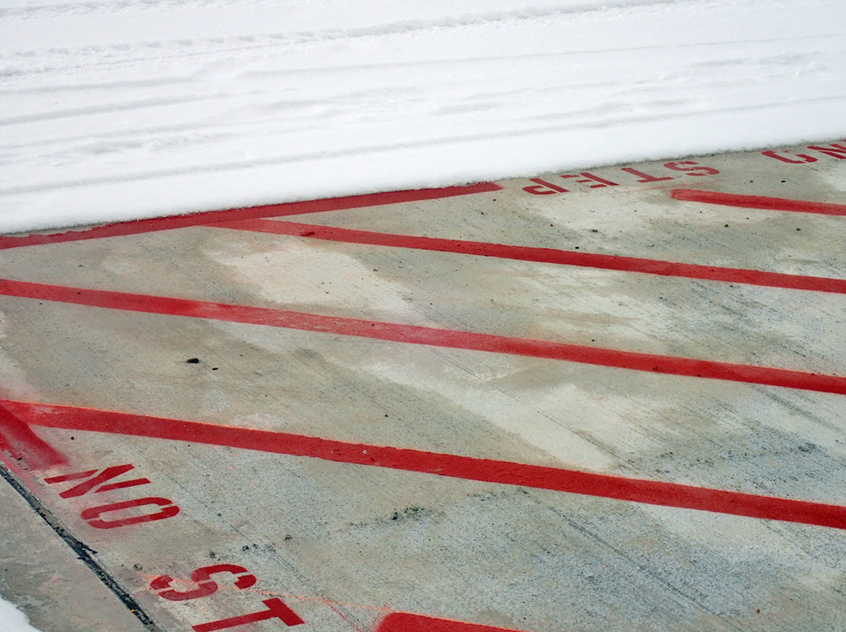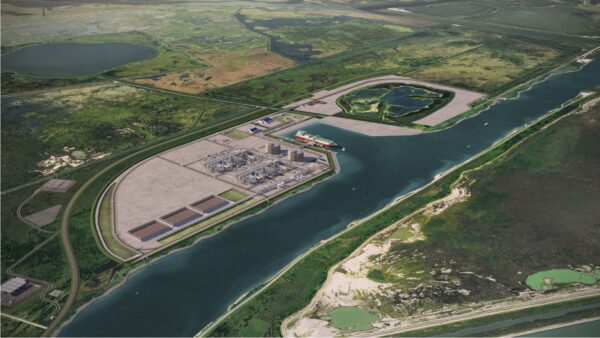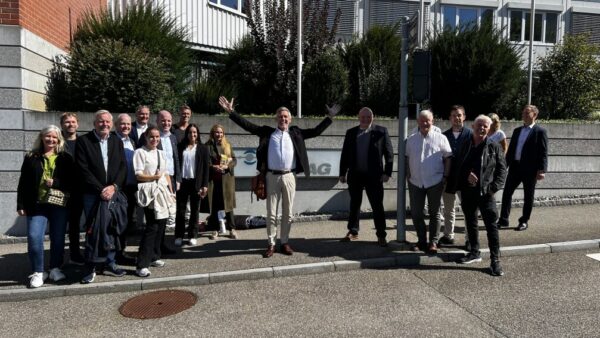Two slabs of electrically conductive concrete have been installed at Des Moines International Airport in Iowa to melt snow and ice.
The research team from Iowa State University said that if the test is successful, the technology could also be used in and around gates for the airport ground-handling equipment and employee activity, as well as in front of the terminal for passengers.
The slabs, which can be controlled by smartphone, are 4.5m by 4.1m concrete and are formed of two layers. The bottom stratum is 100mm of regular concrete, and the top layer is 890mm layer is made from the conductive material.
Between the layers are 12 electrodes, six per slab, running the width of each slab to create the heat.

The concrete contains 1% carbon fibre and a special mix of cement, sand and rocks, with the carbon fibre allowing the concrete to conduct electricity.
The slabs are also fitted with temperature probes, strain gauges and humidity sensors.
There are two surveillance cameras mounted nearby and a high-grade thermal camera will be used to monitor progress.
The technology uses 333W per sq m, the equivalent to the energy used by three light bulbs for seven hours, costing about $0.19 per sq m.

The installation cost will be higher than laying normal concrete or tarmac, but will save money on plowing, de-icing chemicals and wastewater treatment of chemical runoff.
Halil Ceylan, an Iowa State engineer, said: “We have proven this technology does work. Our goal is to keep airports open, safe and accessible. We don’t want any slips or falls, or any aircraft skidding off runways. Our technologies can contribute to providing a safe environment and fewer delays.”
The research is run by the Federal Aviation Administration and may be extended to other airports if results continue to be successful.
Images courtesy of Halil Ceylan/Iowa State University
Comments
Comments are closed.











With the coming breakthroughs in nuclear fusion power this becomes very feasible! Even for highways! Fusion power will change the way we do almost everything. It will change the way we think about using power.
The recent breakthrough at MIT and superconductivity for use in electromagnetism is an example of breakthroughs that are in the process of happening. China, Europe, Russia, USA should all be working together to get Fusion power on line quickly. An international Manhattan project for fusion.
Interesting, but you’d think it’d be the same concerns and issues of other heated drive / surface options.. The problem arises when a problem arises.. Repair is almost impossible and damage is more likely in extreme climates.. Will be interesting to see how this goes!
Mick, since continuity is not a requirement – the entire slab is conductive – comparison to failure-prone radiant heat/snow melt systems isn’t as relevant. They are almost always break-related.